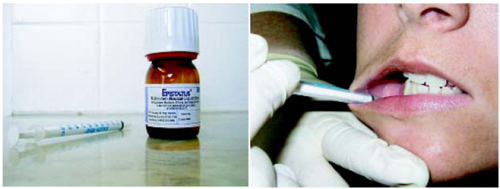 Purpose: to assist each child at the time of a seizure and when/if rescue medication administration is needed.
Purpose: to assist each child at the time of a seizure and when/if rescue medication administration is needed.
Objectives: Upon completion of the rescue medication training, the participant(s) will demonstrate and/or verbalize the following competencies:
- Have a basic understanding of seizures and the different types and characteristics of each
- How to manage seizures
- Read medication label and how to correctly follow directions on medication label
- How to appropriately administer Diastat
- How to appropriately administer buccal midazolam
- How to appropriately administer sublingual lorazepam, and other sublingual benzodiazepines
- When to call EMS (911)
Video: http://www.diastat.com/13-Nursing/1-Nurses_Resource.html
In The Event of Seizure Activity:
- Refer to Emergency Seizure Instructions
- Ease child to floor
- Remover hazards such as sharp or hard objects to prevent injury
- Loosen tight clothing at the neck
- Turn child on side to allow saliva to drain and keep airway open
- Cushion head
- Monitor and speak to child in soothing tones
- Follow guidelines for emergency administration of rescue seizure medication as instructed by parent
- Monitor breathing and perform CPR or apply oxygen if necessary or if directed by parent on emergency protocol instructions
Buccal administration of rescue medication
 Administration of Buccal Midazolam (Epistatus) as rescue medication for seizures (Available in the UK as a specialized medication)
Administration of Buccal Midazolam (Epistatus) as rescue medication for seizures (Available in the UK as a specialized medication)
- Buccal Midazolam (Epistatus) is supplied in a bottle containing 5mls of midazolam maleate (10 mg/ ml) with a safety lid and 4 syringes of 1 ml capacity.
- Open the bottle by pressing down on the lid and twisting it in an anti-clockwise direction. Insert one of the syringes firmly into the opening on the top of the bottle, with the plunger of the syringe pressed fully in.
- Holding the bottle firmly, turn it upside-down and slowly pull back on the plunger of the syringe to withdraw the prescribed amount of medicine. Replace the lid on the bottle to avoid accidental spillage and evaporation.
- Open the mouth gently by holding the chin and applying gentle downward pressure to the lower lip with your thumb. Wipe away any excess saliva etc. (there is no need to part the teeth)
- If the child is on the ground, gently hold the chin to keep the head steady
Other forms of midazolam administration Nasal administration of rescue medications
Some families may have midazolam hydrochloride in various concentrations for administration to their child as a rescue medication. Knowing the concentration of the formulation is IMPORTANT. It is also important to filter the medication with appropriately when withdrawing from a glass ampule that is broken at top prior to administration. .
Typical concentrations for buccal or nasal administration include:
- Epistatus (buccal midazolam maleate) 10 mg/ ml – this medication is a buccal formulation that is safely administered directly from the manufactured bottle
- Versed (midazolam hydrochloride) 5 mg/ ml – ampule or bottle with plunger
- Versed (midazolam hydrochloride) 2 mg / ml – ampule or bottle with pluger
- Versed (midazolam hydrochloride) syrup 2 mg/ ml – administered from bottle, oral formulation, not proven effective for rescue medication.
Nasal administration of midazolam is sometimes used to treat seizures. There is no manufactured formulation, and most children using this application have midazolam hydrochloride from an ampule or bottle drawn up to correct dose in a syringe and administered. Be aware of concentration, apply the formulation slowly to avoid dripping from nasal cavity, and beware of coughing from drainage into throat. Take precautions on aspiration. Make sure medication is filtered if obtained from glass ampule.
Sublingual Administration of Rescue Medication
- Some children use medication placed under the tongue for rescue from seizure activity
- Some medications include, Ativan (lorazepam) sublingual, Lorazepam tablet, Clonazepam tablets or wafers
- Pay careful attention to written instructions and strength of drug to be administered
- Place medication under tongue and allow to dissolve; not generally used for status epilepticus or prolonged seizures.
